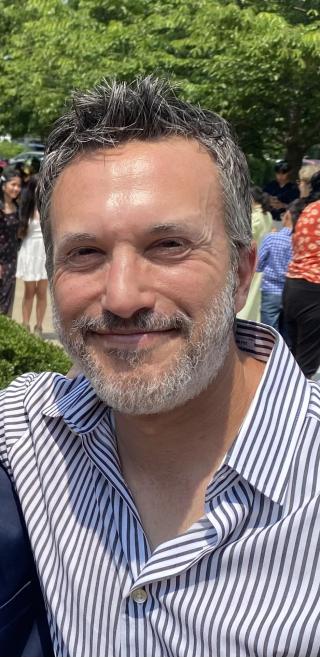Jared Novick is a Professor in the Department of Hearing and Speech Sciences, where he studies how people understand language as it unfolds in real time. His research examines the cognitive and neural systems that support this process, focusing in particular on how domain-general mechanisms like cognitive control and attention interact with language-specific operations. Using methodologies such as eye-tracking, EEG, and fMRI, Dr. Novick and his collaborators have shown that these systems contribute to resolving ambiguities in language—enabling listeners and readers to adjust their interpretations in the face of unexpected or conflicting information. This work has important implications for understanding clinical populations whose communication challenges stem from executive function deficits. This work can also inform bilingual education practices: For example, recent findings demonstrate that code-switching can enhance bilingual listeners' attention and memory for linguistic input, challenging assumptions about its costs and pointing toward the prospect of more effective approaches to learning.
In addition to his research, Dr. Novick is actively involved in teaching, mentorship, and academic leadership. He teaches courses on psycholinguistics and scientific literacy, and works closely with students at all levels through classroom instruction and research advising. He also co-directs the department’s honors program and serves as Director of Undergraduate Studies, where he helps shape curriculum, support student development, and foster inclusive learning environments.
Areas of Interest
- Psycholinguistics; Bilingualism; Cognitive Control; Neuroscience
Degrees
-
Ph.DCognitive Psychology, University of Pennsylvania
-
A.M.Cognitive Psychology, University of Pennsylvania
-
B.A.Brain and Cognitive Sciences, University of Rochester
| Course Name | Course Title | Semester | Syllabus |
|---|---|---|---|
| HESP214 | The Research Behind Headlines on Words, Thought, and Behavior | Fall 2025 | |
| HESP468H | Professional Development in Research and Academia; Honors Seminar: Professional Development | Fall 2022 | |
| HESP214 | The Research Behind Headlines on Words, Thought, and Behavior | Spring 2022 | |
| HESP818C | Seminar in Language Processing; Seminar in Psycholinguistics | Spring 2021 | |
| HESP214 | The Research Behind Headlines on Words, Thought, and Behavior | Spring 2021 | |
| HESP300 | Introduction to Psycholinguistics | Fall 2020 | |
| HESP214 | The Research Behind Headlines on Words, Thought, and Behavior | Fall 2020 | |
| HESP214 | The Research Behind Headlines on Words, Thought, and Behavior | Spring 2020 | |
| HESP300 | Introduction to Psycholinguistics | Fall 2019 | |
| HESP214 | The Research Behind Headlines on Words, Thought, and Behavior | Fall 2019 | |
| HESP214 | The Research Behind Headlines on Words, Thought, and Behavior | Spring 2019 | |
| HESP300 | Introduction to Psycholinguistics | Fall 2018 | |
| HESP214 | The Research Behind Headlines on Words, Thought, and Behavior | Fall 2018 | |
| HESP300 | Introduction to Psycholinguistics | Fall 2017 | |
| HESP300 | Introduction to Psycholinguistics | Spring 2017 | |
| HESP300 | Introduction to Psycholinguistics | Fall 2016 | Syllabus |
| HESP818C | Seminar in Language Processing; Seminar in Psycholinguistics | Spring 2016 | |
| HESP300 | Introduction to Psycholinguistics | Fall 2015 | Syllabus |
| HESP300 | Introduction to Psycholinguistics | Fall 2014 |
| Course Name | Course Title | Semester | Syllabus |
|---|---|---|---|
| HESP468H | Professional Development in Research and Academia; Honors Seminar: Professional Development | Fall 2024 | |
| HESP468H | Professional Development in Research and Academia; Honors Seminar: Professional Development | Spring 2022 |
-
CampusFaculty Member, Program in Neuroscience and Cognitive Science
-
CampusFaculty Member, Maryland Language Science Center
-
ProfessionalFellow of the Psychonomics Society
-
CampusCo-Director, PhD Program in Hearing and Speech Sciences
-
ProfessionalDirector of Undergraduate Studies
Current Students
Former Students
-
Erika Hussey
-
Susan Teubner-Rhodes
-
Rachel Adler
-
Zoe Ovans
-
Zach Maher
-
Lauren (Ren) Salig
-
Nina Hsu (postdoc)
-
Tal Ness (postdoc)



